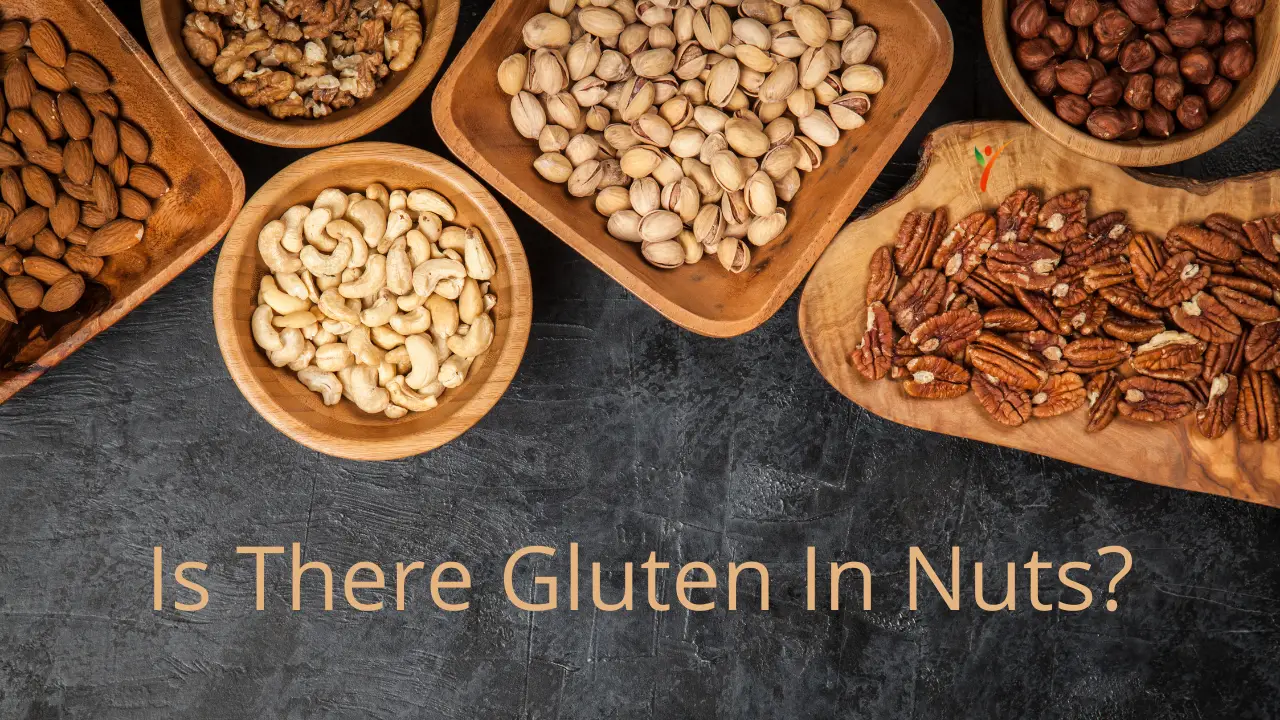Nuts, you can eat on their own or add them to your breakfast. They are an incredibly nutritious food. Recent studies suggest that not adding nuts to your daily diet can result in life-threatening diseases. But, let's keep the medical talk aside for later and focus on this small yet nutrition-packed food.
Should you be eating nuts at all on a gluten-free diet? What if they trigger your gluten sensitivity or celiac symptoms? Many gluten-free dieters ponder over whether adding nuts to their diet is safe. We've got the answers to all your nut-related questions in this guide to eating nuts on a gluten-free diet.
What are Nuts?

A nut is a fruit with two main parts- the inedible hard shell and the edible seed in its center. That being said, the term has become so common that the culinary world considers seeds and legumes nuts.
The botanical term specifies nuts with a hard outer shell in its real sense. Once the hull falls off, it then reveals the edible seed. Hence, under this definition, examples of nuts include hazelnut, chestnut, and acorn.
Meanwhile, the culinary field has extended the definition of nuts to any food with an outer layer. What makes these different from actual nuts? These foods' shell mostly falls off by themselves and does not require force.
Let's simplify it further. Seeds are the tree's real treasure's inner component, producing the fruit. Consider foods such as almonds, pistachios, and cashews; these all fall under seeds.
Remember everyone's favorite, peanuts? Peanuts grow underground in pods, excluding them from nuts and seeds and placing them under the category of legumes.
Nuts, seeds, and legumes often share similar characteristics; hence, the confusion. If you're not aware of their exact differences, it's easy to mistake one for another. Since their structures are somewhat identical, you're not the only one mixing them up.
Common Types of Nuts in the Culinary World
We've already discussed how most of these are not nuts. However, recipes worldwide use these nuts in their list of ingredients. This list forms some of the most eaten variety of nuts in the United States. Here are some interesting facts on each one:
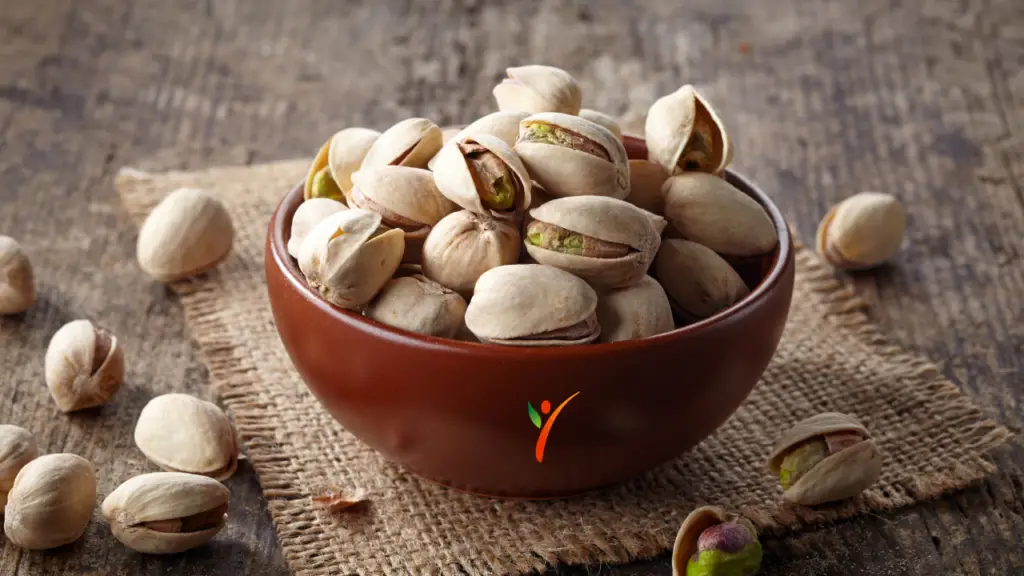
Pistachios
Pistachios come with light brown shells, revealing the green nut within them. These tasty treats are the prized possession of Middle Eastern and Asian countries, including Iran, Pakistan, Afghanistan, Turkey, and China. Pistachios are considered one of the oldest nut snacks, dating back to the Romanian Empire. Due to its originating countries, many Middle Eastern dishes such as baklava, halva, and ma'amoul, use pistachios generously.
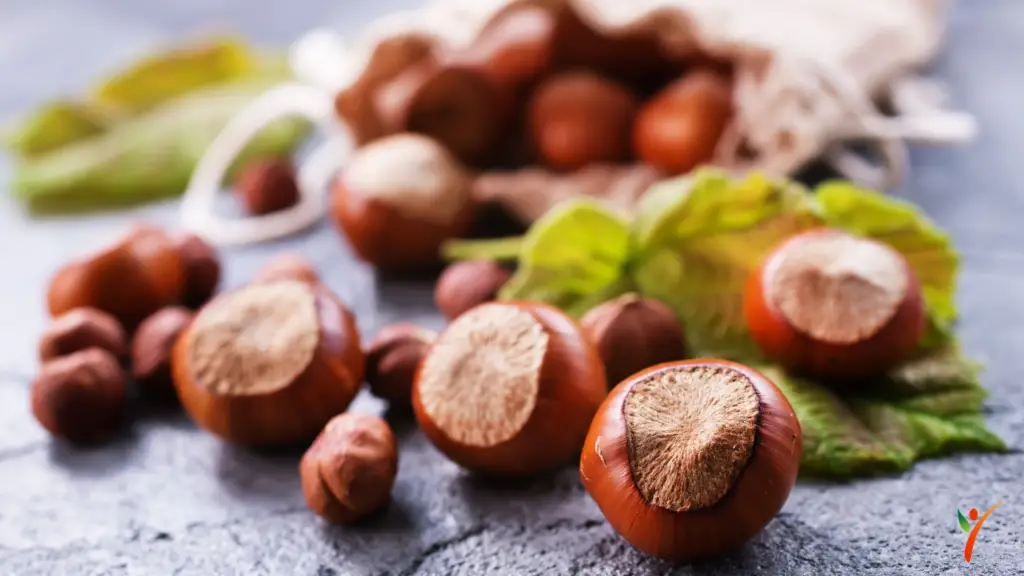
Hazelnuts
Hazelnuts grow on bushes, mostly found in the North American region. Hazelnut means ‘full beard'. The nut got this name due to the beard-like appearance of its shell. When pried off, these nuts' hard exterior reveals small round shaped nuts.
The combination of woody and sweet flavor of hazelnuts complement the natural flavors of chocolate. Hence, the invention of chocolate hazelnut spreads like Nutella. You can eat these nuts in their raw, salted, and roasted form. Roasted hazelnuts are ideal for savory dishes such as salads or seafood because of their crunchy texture when you cook them.
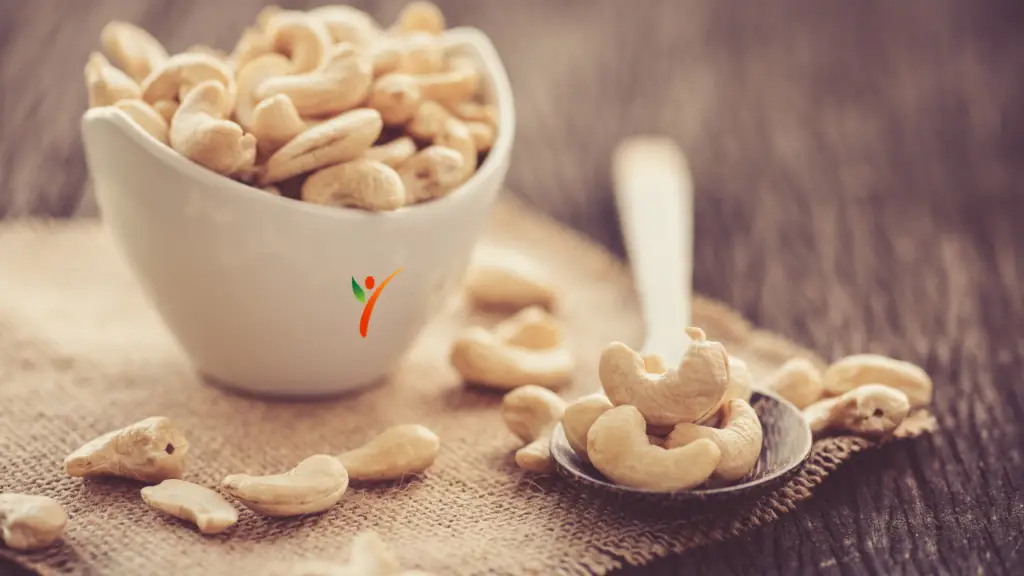
Cashews
When you eat cashews, they're nothing less of a delicious nutty, salty explosion in your mouth. Their incredibly nutritious value has expanded their usage to cashew jams, syrups, and milk.
Cashew is technically the seed component of the cashew apple. An interesting fact about cashews is that the liquid contained in their outer shell is poisonous to human skin. Therefore, the cashew nut is separated from its fruit only after being frozen or roasted.
Traveling from Brazil to India, cashews are now a significant ingredient in Asian cuisine. Although, the US remains one of the top consumers of cashew nuts! Try adding these to your homemade granola bars and have the best of both worlds; flavorful and nutrition-packed.
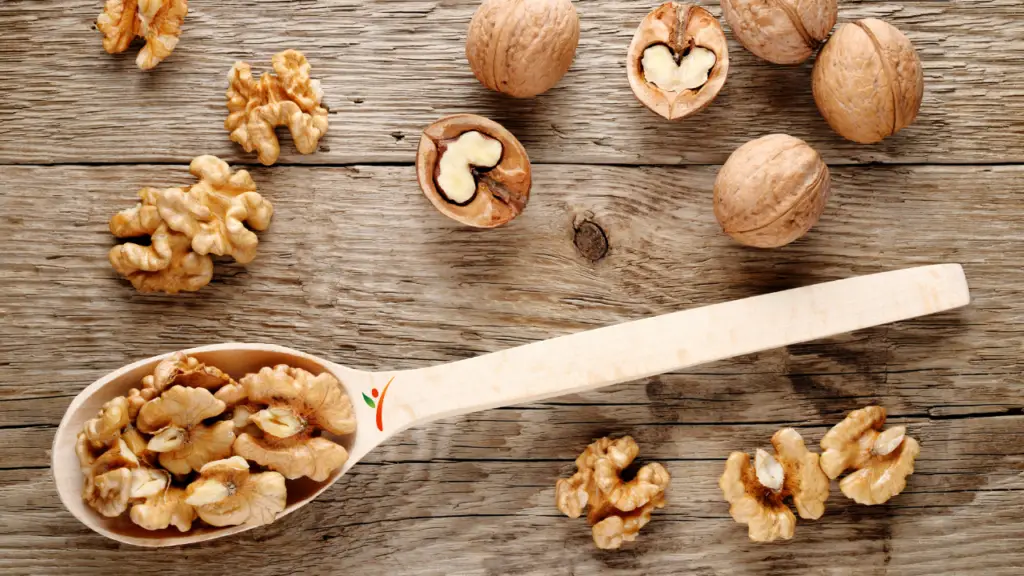
Walnuts
Once again, walnuts are another prehistoric food tree, dating back to 7000 BC. Even the Greeks and Romans recognized and benefitted from the medicinal properties of walnuts for the human body.
When describing the taste, you'll find walnuts to be bitter and dry. Meanwhile, walnuts harvested straight from the trees have a mild flavor and soft texture. A divine addition to sweet and savory dishes, walnuts are especially favored in baking products. Kung Pao Chicken or fudge brownies, walnuts add a unique flavor to any recipe.
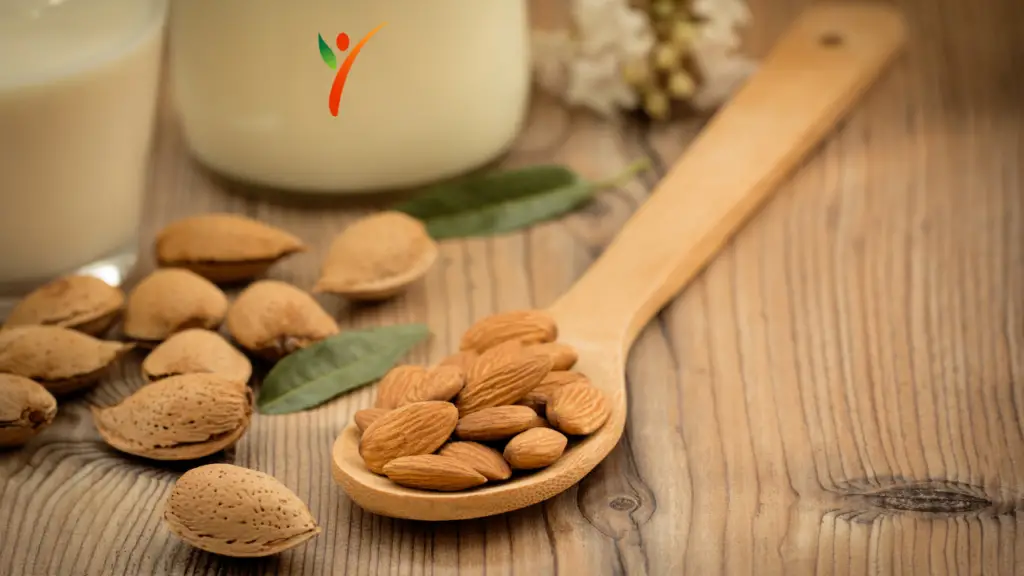
Almonds
United States, Spain, and Italy are the primary contributors to almond production. Due to its slightly sweet flavor, products such as almond milk, flour, and oil are widely popular. Also, almonds are nutrition powerhouses, but they're super low on calories! For anyone trying to lose that extra weight, almonds can keep you full and keep a check on those calories.
Almonds can only be grown if there are bees in their vicinity to carry out the pollination. You can forget about those almond trees if there are no bees in sight. Plus, an advantage of almonds is that they come in many varieties. You can buy them with skin or without skin, shell or shell-less, whole or chopped. In the end, it all depends on your personal preferences.
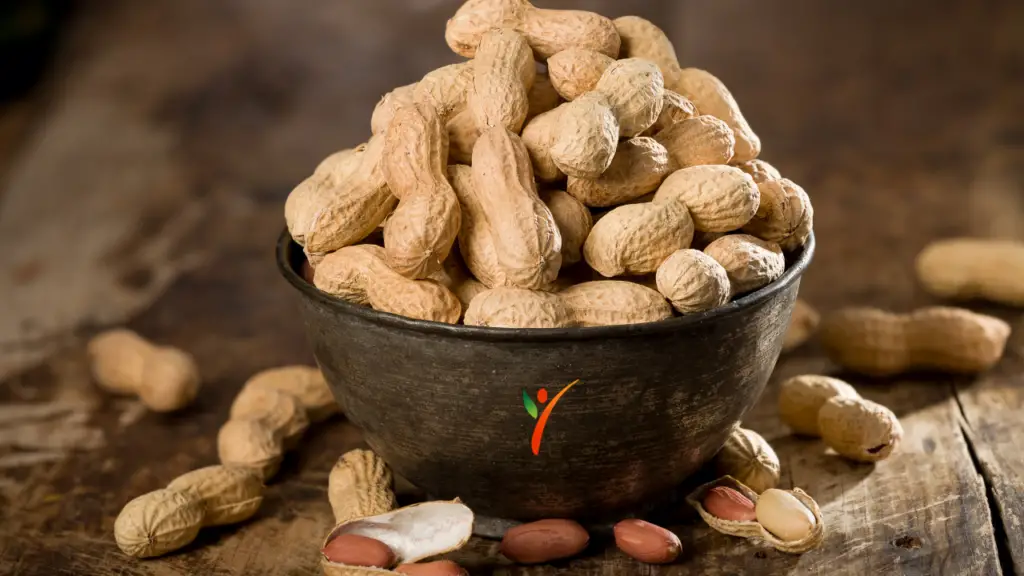
Peanuts
Look for a warm climate, and that's where you'll find peanuts growing. However, you can find packaged peanuts all year round due to their wide availability. And guess what, according to the US laws, a jar of peanut butter should contain 90% peanuts. That's around 500+ peanuts in a single 12-ounce jar!
While they are tasty on their own, many individuals prefer roasting and seasoning them before consumption. It's no wonder the idea of roasted peanuts is so popular nowadays.
Should You Eat Nuts?
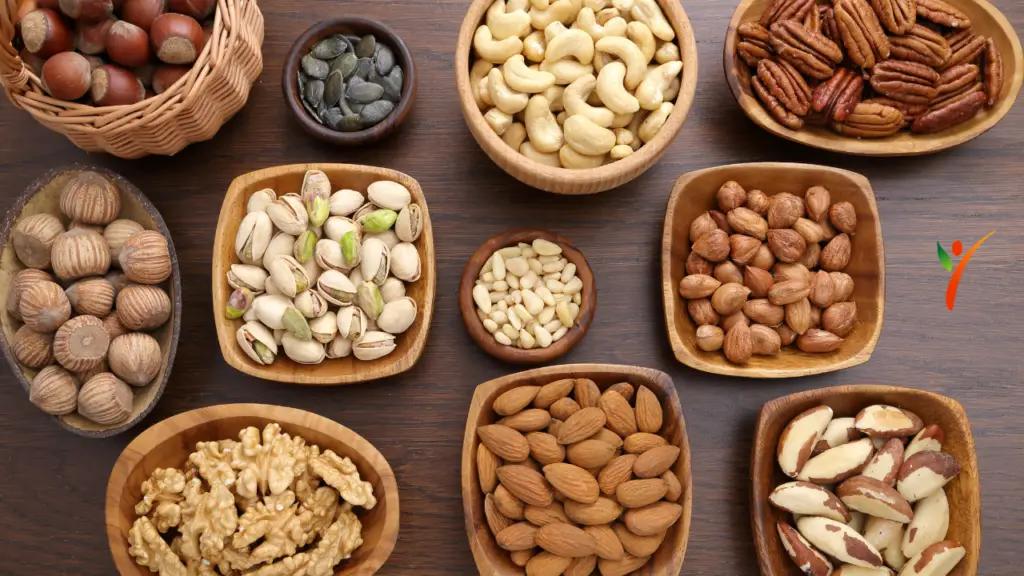
Health experts and nutritionists will answer this question with an obvious yes. Although, of course, you'd first want to know WHY exactly are nuts a healthy choice.
Nuts come with many fats, the healthy monosaturated ones, that help lower bad cholesterol. Meanwhile, they're a must-have for diabetes patients because of their ability to regulate blood glucose. Fiber, protein, vitamins, and minerals; nuts bring them all in a handful serving. If you're worried about your skin, add walnuts to your diet. Nuts may also help lower the risk of numerous diseases, including cardiovascular illnesses and cancer.
Additionally, they're calorie-dense, which means they can help reduce weight by keeping you satiated longer. Overall, nuts are a healthy addition to the diet but don't eat too many in one day, as they can also cause gas and diarrhea.

Making the Best of Nuts
It's good to know a few tips before you grab nuts on your next grocery run. We have some tips you should keep in mind:
Bulk Buying Saves Money-
The temptation to buy separate bags of nuts is real. But, trust us when we say it, you should buy them in bulk instead. Nuts, especially macadamia nuts, pine nuts, almonds, and cashews, are costly when bought in small quantities. Therefore, save yourself from spending too much on nuts and go for bulk supply or mixed nut bags.
Check if They're Fresh-
Don't just go around blindly buying nuts and munching them down. While nuts have a prolonged shelf life, some might still go bad. Check for anything fishy such as moldy nuts or funky odor when you're about to eat them.
Get Whole Nuts-
Yes, buying the roasted version is awarding, but it's not always the best option. Buy whole nuts; we'll give you two reasons for that. Firstly, they have a considerably longer shelf-life than canned versions if you store them correctly.
Secondly, many canned or roasted nuts lose their nutritional value when combined with additional preservatives. For this reason, we recommend buying whole nuts and then chopping, dicing, roasting, and seasoning them yourself.
Store Them the Right Way-
Store your nuts in an airtight container rather than keeping them uncovered. This simple step will ensure they stay fresh for months and don't attract any odd smells. That's right; nuts lying around can absorb odors from their surroundings. Hence, avoid this mishap and place them in an airtight container immediately after buying them.
Keep an Eye when Cooking-
The deliciousness of roasted nuts is pretty much incomparable. But, that quickly shifts to a disaster if you're not keeping a watchful eye during cooking. Roasting nuts take only about 4-5 minutes on medium heat; any longer, they'll burn. Ultimately, resulting in bitter, burnt nuts, and you do not want that to happen.
Eating Nuts on a Gluten-Free Diet

There is no gluten in plain nuts; after all, they're just nuts. Meanwhile, roasted or seasoned nuts might not always be in a safe zone for gluten-free dieters. Roasted nuts have a layer of wheat flour as a top-coating on them. You can always double-check with the manufacturer, but it's better not to take the risk.
The simple solution is to buy plain or salted nuts. Of course, plain is ideal since salted versions have a high sodium presence. As far as nut products go, most products such as nut butter and nut snacks are also not gluten-free. Hence, either look for gluten-free nut products or go for homemade versions.
Tons of manufacturers produce gluten-free packaged nuts for the increasing community of gluten-free dieters. These manufacturers ensure no gluten-containing ingredients are present and safety precautions for eliminating cross-contamination. Plus, you can easily find them in local grocery stores and online.
- Nuts.com– Another certified gluten-free company in the field, nuts.com even ensures gluten-free facilities, preferable for celiac and gluten-sensitive patients. Being one of the largest manufacturers of nuts in the US- this company brings an infinite list of varieties. It's safe to say they have any nut you'd want to get your hands on.
- Blue Diamond- Many include this brand in one of the best nut manufacturers due to its flavored nut varieties. If you're a dedicated nut-lover, you wouldn't want to miss out on this brand. Blue Diamond, additionally, produces nut products such as nut milk and nutcrackers. The company ensures gluten-free ingredients in its GF products; but avoid candy-coated nuts, as well as Wasabi & Soy Sauce-flavored nuts.
Recipe For Gluten-Free Granola Bars
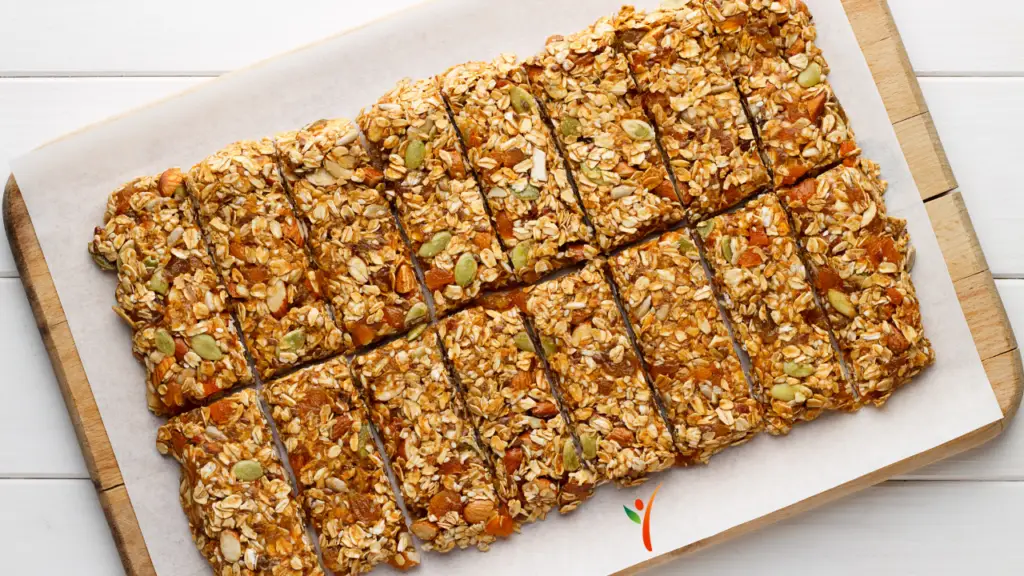
The hype of granola bars isn't dying out any time soon. And, considering a single bar in breakfast can get you going till lunch, it wouldn't hurt to make some. Rather than spending money on expensive gluten-free granola bars containing additional sugars, preservatives, and oils, bake them yourself with this easy recipe.
Servings- 15
Prep Time- 10 minutes
Cooking Time- 30 minutes
Ingredients:
- 1/3 cup dried mulberries, chopped
- 1/3 cup dried strawberries, chopped
- 1/2 cup raw cashews, chopped
- 1/2 cup gluten-free peanut butter
- 2 large ripe bananas, mashed
- 1/3 cup raw sunflower seeds
- 1 cup gluten-free rolled oats
- 2 tablespoons chia seeds
- 2 tablespoons flaxseed meal
- Optional- 2 tablespoons of protein powder
Instructions:
- Preheat your oven to 350°F. Meanwhile, cover an 8×8 square baking sheet with parchment paper.
- Mix the peanut butter and bananas in a bowl. Then add the remaining ingredients and mix until well combined.
- Putting the mixture in the baking sheet, lightly press down so that it's leveled evenly.
- Bake for 25-30 minutes. Cut the block into triangles after taking them out of the oven. Then cool for half an hour before eating.
- To store the granola bars, store them in an airtight container for up to one week.
Final Words
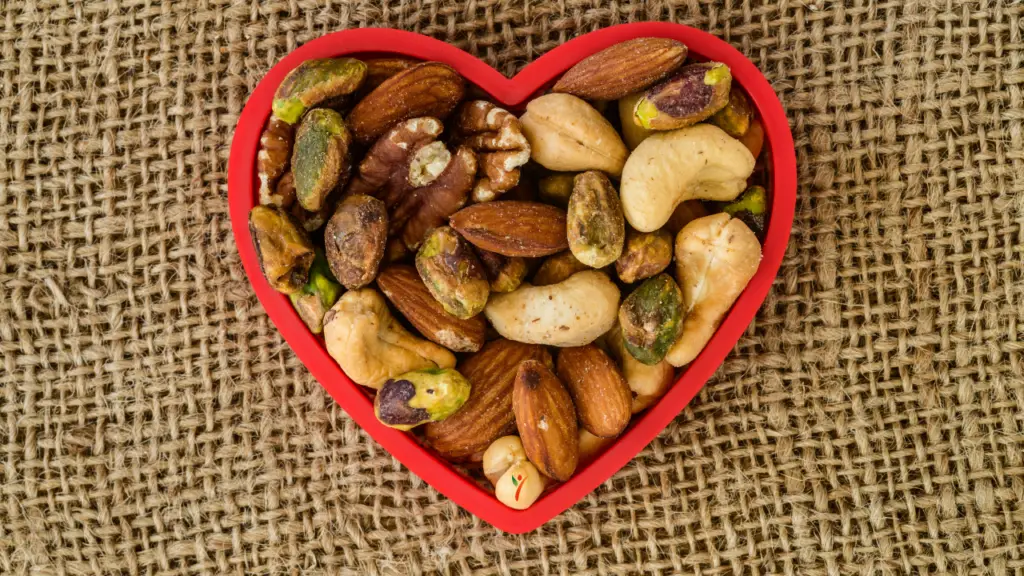
Whatever you do, don't exclude nuts from your gluten-free diet. They're nutritious, and they'll improve your quality of life by strengthening your immune system.
If you haven't figured it out yet, nutritionists are crazy about nuts for a good reason, and so should you! Keep a handful in your bag as a lunch-time snack, or better yet, add them to your recipes.
The owner of this website, HealthYeahLife.com, is a participant in the Amazon Services LLC Associates Program, an affiliate advertising program designed to provide a means for sites to earn advertising fees by advertising and linking HealthYeahLife.com Review to Amazon properties including, but not limited to, amazon.com.

